
Once upon a time, the internet was full of blogs.
Pre-social media, anyone who was anyone had their own blog, a personal page for publishing their thoughts and interests. Many early social networks like Twitter and Tumblr were first advertised as “microblogging” platforms.
Nowadays, social media has outgrown the blogosphere. Gone are the days of free web pages powered by GeoCities. Still, people love to read and write. This new internet era has brought with it new frontiers for publishing written work, including Substack and Medium.
Both Substack and Medium promise to help fledgling and established writers publish their work, build their audience, and make money doing it. Which one should you use for your writing? Let’s compare Substack vs Medium.
What Are Substack and Medium?

In the blogging platform race, Medium got a few years’ head start. Founded in 2012 by Ev Williams, a founder of Twitter and Blogger, Medium was, fittingly, a middle ground between the two.
Hosting mid-length blog posts, Medium is uniquely designed to make blogs discoverable by topic. This adds a social element to editorial content and helps new writers find an audience.
Substack, meanwhile, was founded in 2017 by Chris Best, one of Kik’s founders (among others). It offers something of a solution to the volatility of today’s journalism industry. It attracts established writers, including Chuck Palahniuk and Salman Rushdie, with the promise of regular income through Patreon-like subscriptions.
Getting started with Substack and Medium
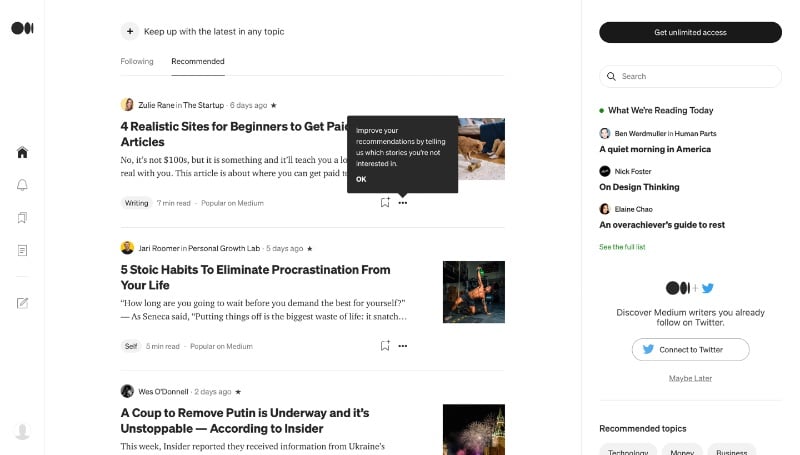
For Substack or Medium, getting started is as easy as verifying your email.
Substack invites you to create your blog right away, setting a name, a description, and importing your existing mailing list.
Medium, on the other hand, starts you off in your reader feed, encouraging you to follow blogs and tags that interest you. Substack also invites you to follow blogs and topics during the process, but the difference is clear. Your blog and audience come first on Substack, your connection to the community comes first on Medium.
[in_content_ads gallery=”logos” logo=”on” title=”Need graphic design help?” subtitle=”Try Penji’s Unlimited Graphic Design and get all your branding, digital, print, and UXUI designs done in one place.” btntext=”Learn More” btnlink=”https://penji.co”]
Writing on Substack vs Medium
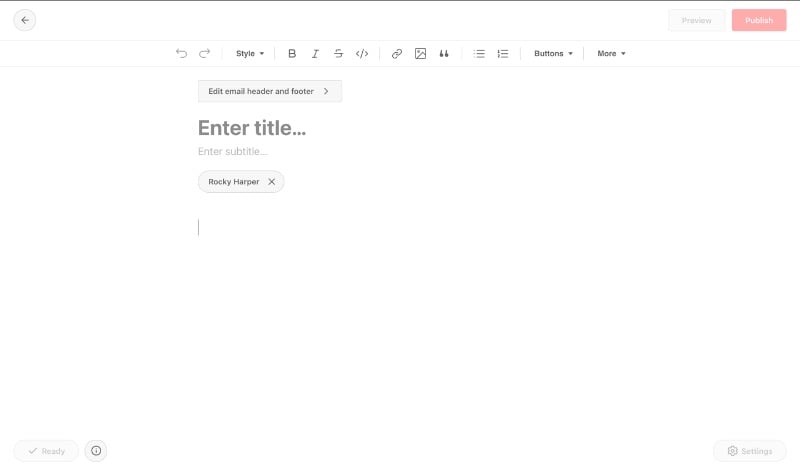
Both writing platforms make it easy to start publishing with little setup. While these services are much less customizable than starting your own website, they allow you to sign up and start writing in under a minute.
Substack and Medium have similar editors, each inviting you to enter your title, subtitle, and hit the ground running. Substack’s is a little more user friendly, with a handy upper menu for changing your text styles, adding buttons, embedding images, and more.
They also have similar publishing options. Once you’re finished writing, you’re invited to add a header image and update your social settings. For Medium, that means adding tags so your post can be discovered. On Substack, you choose who among your subscribers can see the post, who can comment, and who receives it in their email.
While Medium allows you to import your writing from all over the web, Substack has some extra publishing options that make it stand out. You can create “threads,” short posts encouraging your subscribers to chime in. They also have a podcasting feature, and are beta testing video posts.
Medium prides itself on simplicity, but when it comes to the actual act of writing, Substack takes the cake.
Substack vs Medium communities
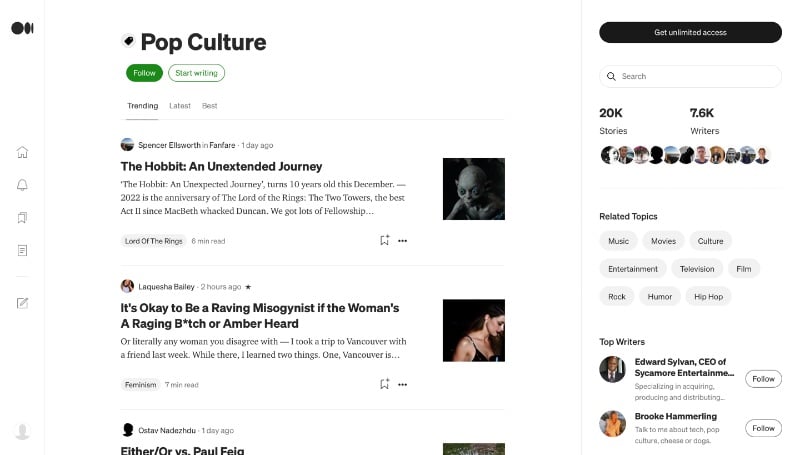
Medium’s tagging system encourages readers to follow topics they’re interested in, in addition to blogs. This feature helps foster community between Medium readers and writers, helping creators get discovered and reach a broader audience.
Substack was founded more as a resource for established writers, acting more as a paid newsletter. They’ve made strides in their community tools since then, adding a mobile app and a “Discover” tab for finding new writers.
Still, it’s clear that Substack’s primary use is creating and signing up for email lists. Even using your Discover feed, there’s little connection between one post and the next. For that reason, Medium as a platform has a better overall sense of community.
Paying and earning on Substack and Medium
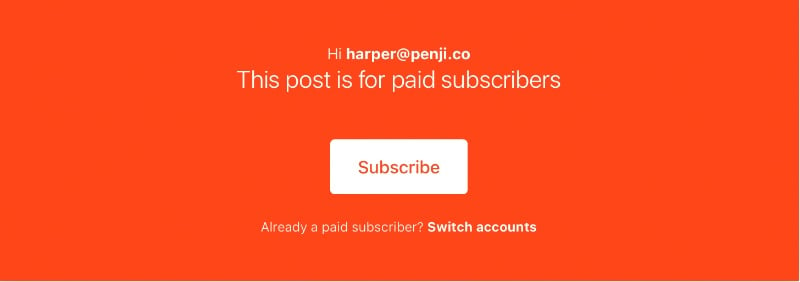
Writing on Medium or Substack is free, but both services incorporate payment structures for readers. This is part of the appeal of both platforms: they offer a way for indie writers and freelancers to get paid.
Substack’s pay structure is simple; it’s not too different from Patreon. You set up a structure for free and paid subscriptions, choosing what incentives to offer for paid subscribers and which posts to deliver for free. Once you get paid subscribers, you keep 90% of the revenue from subscriptions.
Medium, on the other hand, is a bit more complicated. Rather than subscribing to your blog, readers subscribe to Medium as a whole for $5/mo or $50/yr. Writers can still get a cut of that revenue… if their audience is big enough.
To apply to the Medium Partner Program, you have to have at least 100 subscribers and post regularly. From there, the process is similar to YouTube ads. How much you get paid depends on how much time users spend reading your work.
In the end, both services aren’t going to make you a lot of money unless you’re already successful or happen to blow up. Medium makes it easier to get discovered. It also tends to have a higher domain authority, making it perform better with SEO than Substack newsletters.
Still, there’s a lower barrier to entry for Substack, and the rewards are much more visible.
Substack vs Medium: Conclusion
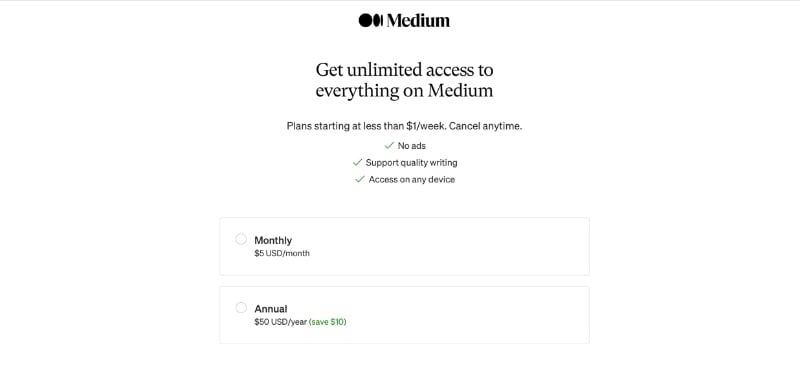
The difference between Substack and Medium comes down to what was mentioned right at the start: their histories. Medium was created to foster its own community, Substack was created to foster its writers’ existing communities. One helps writers get found, the other helps writers get paid.
If you’re looking to create a blog for your business, neither of these may be right for you. The lack of custom options in either case makes it difficult to build brand recognition, and they’re both based upon connection to authors.
If you want to build an audience for your writing, Medium is the way to go. Neither is a bad option, but Medium’s community features make it easy to find new and consistent readers. Plus, Medium articles tend to rank highly on Google.
If you’re not too concerned about building your audience—for instance, if you already have an email list or social media following—go for Substack. They make it easier to get paid, connect directly to your fans, and additional features like podcast hosting make them a more robust service for creators.











